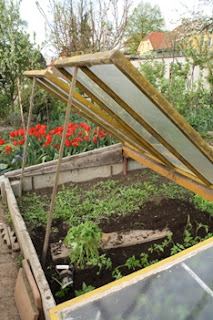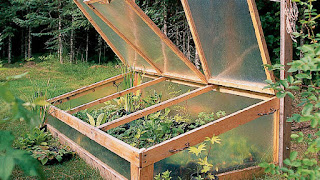Many structures are useful in nurseries, which are used to aid in propagation by providing proper environmental conditions to the cuttings, seeds, etc. of the plant so that germination is quick and the plants are healthy.
These structures are as follows:
Watch Lecture Video
1. Green House
Such structures are covered with plastic, polyethene, and fibreglass which can control the temperature. Such structures provide sufficient heat for seeds, cuttings. Glass is used less due to being expensive but due to the glass being durable, the greenhouse lasts longer. While plastic sheets are more prevalent due to being cheaper. The structure is made of metal or wood. Which is covered with glass or polythene. It has a system of controlling the temperature and maintaining air circulation. To reduce the temperature, fans, and pads, nets on the roof, fogger, etc. are installed. But some low-cost greenhouses also have a net to some height inside the polythene sheets, of which the polythene sheet is made to be folded as required, when the inside temperature is high then the polythene sheet is folded upwards. And fresh and cool air from outside comes inside, which reduces the temperature inside. The shape and size of these greenhouses depend on the environmental conditions of the areas.

2. Shed House/ Lathhouse
This type of structure is made for delicate nursery plants, pots, and some ornamental plants that need to be kept in shade.
This type of structure is made of wood or GI pipes. Which is covered by the agro net. These agro nets are available in two-three colours and in different densities in the market, mostly nets of more than 50% density are used. These agro nets are light due to being made of woven plastic which gives adequate shade to the plants. They keep moisture in them.
3. Hot Beds
Hotbeds are made of wood. Redwood is used to making it, a wooden frame is made which is weaved with wires and made like a net. The size of this structure is 0.9 X 1.8 square meters. Hotbeds help plants grow roots in their early stage and in cuttings. In hotbeds, soil or any rooting media is heated from below. Hot cable, hot water, water vapor pipes, hot-air pipes, etc. are used to generate heat. The hot cable covered with plastic gives it good results.
In hotbeds uses a thermostat to automatically control the temperature. In this structure, a layer of 10–15 cm thick soil is put on top of the hot cables. Heated beds are used more in areas where temperatures are lower throughout the year. There should be a system of providing water in hotbeds. And it is beneficial to have an open section in the southeast direction. And heated beds should be constructed near the office. Many times fresh dung is also used in small nurseries to produce heat in hotbeds.




4. Cold Frame
Cold frames are the same structure as hotbeds which are used to protect plants from heavy rain, cold and strong winds. Such frames are made of light metal or wood. And polythene sheet or glass is used as a lid for covering. By which high humidity and temperature can be stored for the plants. When the temperature is high, their lids are opened, which reduces the temperature inside. There are two types of cold frames: –
- Temporary: – Such frames are made of wood which is used in one season only. And their lids are made from polythene sheets.
- Permanent: – The frame is made of metal and concrete blocks and glass is used as a lid. Such frames can be used for a long time.
The frame size is 2 x 1 meter. This frame is placed 10-15 cm below one side so that the rays of the sun can fall straight.

